Let me talk about myself. After graduating, I worked for just over a month before quitting because working was really not suitable for me. Shortly after quitting, I got into the cryptocurrency circle, stepping in with 50,000 in savings. At first, I knew nothing and lost over 20,000 at once. With reluctance, I returned to work, determined to study and learn persistently. After more than ten years of ups and downs, I have now accumulated over 80 million in assets.
Although I may not achieve small goals like some people who turn 10,000 into 20,000, I am already very content and secure, dreaming of breaking 100 million by the end of this year, and having more capital to earn more money next year.
In the cryptocurrency space, if you truly wish to achieve financial freedom and compound returns, methods, techniques, and forming your own profit system are crucial! Once you learn to master them, the crypto market will become like your 'ATM', making money as easy as breathing.
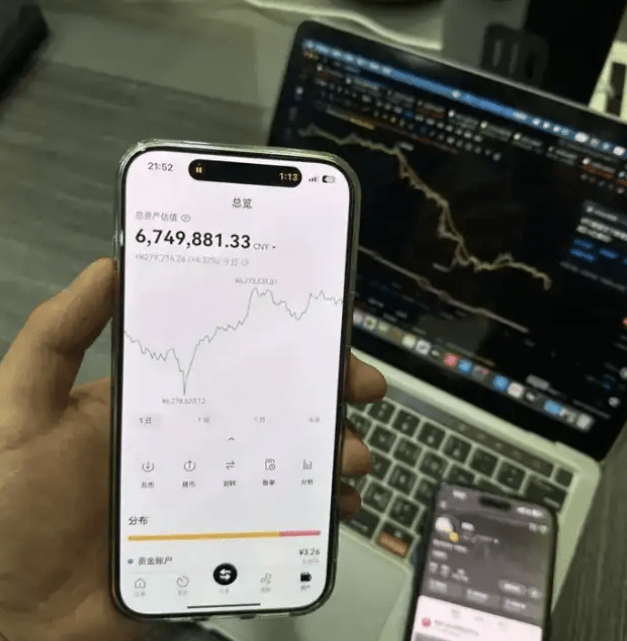
Today, I will share some key insights that have a value of 60 million. I hope they can help you.
1. Choose the right platform: Avoid 'eating customer losses' platforms.
Preferred exchanges: Binance, OKX, Bybit (low fees, good depth, no lagging orders), avoid small platforms (in 2023, a certain platform's malicious spike led to collective liquidations of users).
Key indicators: Check 'funding volume' (over 1 billion USD), 'number of positions' (over 500,000), 'historical spike records' (the fewer, the better).
2. Position control: Use the '1% rule' to protect your capital.
Single position: Each position opened should not exceed 1% of total funds (e.g., with 100,000 principal, single position opened should not exceed 1,000 margin).
Total position limit: The margin for all contracts held should not exceed 20% of total funds (to avoid simultaneous liquidations of long and short positions). For example, with a principal of 10,000 and 10x leverage, single position margin ≤ 100 (corresponding to 1,000 contract value), total position margin ≤ 2,000.
3. Technical analysis: 3 essential indicators to help you determine direction.
MA moving average: The 50-day moving average crosses above the 100-day moving average (golden cross), bullish; crosses below (death cross), bearish.
MACD: Red bars lengthen (bullish strength), green bars lengthen (bearish strength), divergence signals (price rises while bars shorten, may indicate a peak).
Support and resistance levels: Check previous highs and lows (e.g., Bitcoin 32,000 is strong support, 40,000 is strong resistance), open positions following a breakout.
4. Order placement skills: Seize the 'golden opportunity of drastic declines and surges'.
Crash to go long: When the price of the currency falls more than 5% in a short time and touches a strong support level (e.g., Bitcoin falling to 28,000 in May 2025, rebounding 2% within 30 minutes can earn 20%).
Surge to Short: When the price of the currency rises more than 10% in a short time and reaches a resistance level (like Bitcoin failing to break 45,000 and quickly falling back, shorting then can earn 15% within an hour).
Taboo: Do not open positions during sideways fluctuations (70% of the time in consolidation, frequent trading will lead to losses).
5. Closing strategy: The money you earn is real money.
Target achieved for closing: Immediately take profit when reaching the preset gains (e.g., 20%), do not be greedy.
Breakout stop loss: If it falls below support / rises above resistance, stop loss unconditionally (e.g., if the price drops below previous lows after opening a long position, exit immediately, do not bet on a rebound).
Time stop loss: If the position has not reached expectations after 4 hours, force close the position (to avoid staying up late to monitor the market; statistics in 2023 show that users holding positions for over 12 hours have a 3 times higher liquidation rate).
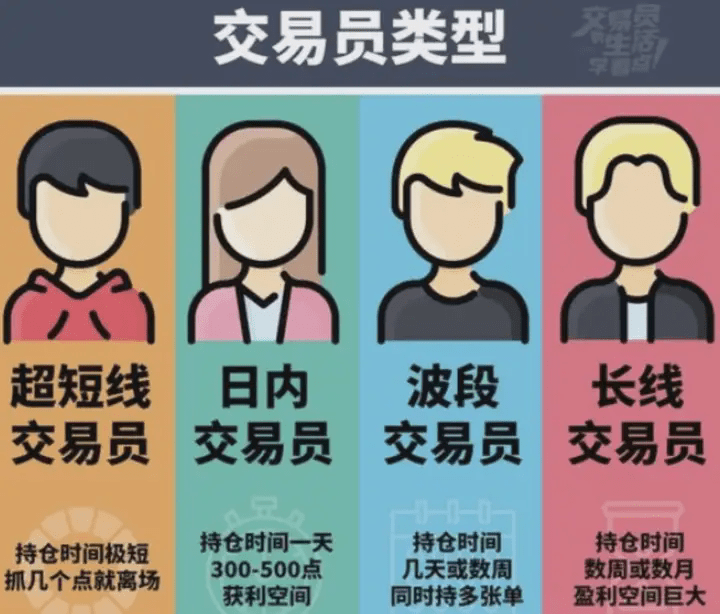
Three core concepts that beginners must learn: Understand these three points, and reduce losses by 80% of the principal.
1. Leverage: Not a double-edged sword, but a 'dragon-slaying sword'.
Commonly used leverage: 10x (low risk), 50x (medium), 100x (for advanced users).
Deadly Pitfall: 100x leverage ≠ earn 100 times, but rather 'a 1% fluctuation leads to a 100% loss of principal' (e.g., with 100x leverage, a 10,000 principal buys 1 million in assets, and a 1% drop means a loss of 10,000, leading to immediate liquidation).
Iron rule: Beginners should only use 10-20x leverage, while veterans should not exceed 50x (statistics from 2023 show that 99% of users using 100x leverage liquidated within 3 months).
2. Stop loss and take profit: The 'lifesaver' more important than making money.
Stop loss: Set in advance 'how much loss must be exited' (e.g., with a principal of 10,000, set a stop loss of 5%, losing 500 will automatically close the position to avoid holding until liquidation).
Take profit.: Automatically take profits after reaching the target gain (e.g., expected to earn 20%, forcibly sell after making 2,000 profit to avoid a reversal loss).
Real case: In 2024, Bitcoin crashed 30%, users who set a 10% stop loss only lost 10% of their principal, while those who did not set a stop loss were directly liquidated to zero.
3. Funding rate: The 'hidden mechanism' of earning money from the opposing position while lying down.
Principle: When long and short positions are imbalanced (e.g., 80% users are long), the platform will require long position users to pay funding fees to short position users, and vice versa.
Practical tips: In extreme market conditions (like Bitcoin breaking key resistance levels), open a small reverse position to earn funding fees, making daily profits of 0.1%-1% (data from a certain platform in 2025 shows that users who long-term earn funding fees have stable annualized returns of 15%+).
Three advanced strategies used by experts.
1. Hedging strategy: A 'winning formula' that profits in both rising and falling markets.
Action: Open both 10x long and 10x short positions simultaneously (each occupying 5% of the position). When the price fluctuates more than 2%, close the losing position and hold the profitable one.
Case Study: Bitcoin fluctuating between 30,000 - 40,000 can yield a monthly profit of 5%-10% using a hedging strategy, with risks approaching zero.
2. Laddered position adding: The 'bottom-fishing artifact' during a market crash.
Steps: If the price drops by 10%, open a 1% position long; if it drops another 10%, open a 2% position; if it drops another 10%, open a 3% position, and so on.
Advantages: Reduces average cost; a 15% rebound can turn losses into profits (e.g., if you open long at 30,000 and it drops to 24,000 with a total position of 6%, a rebound to 27,600 will break even).
3. Fund management: Use the 'liquidation price calculator' to save your life.
Tool: Input margin, leverage, and position size in the exchange app to automatically calculate the liquidation price (e.g., with 10x leverage and 10,000 margin, liquidation price = opening price - opening price × 10%).
Iron rule 4: Ensure the liquidation price is at least 20% away from the current market price (for example, if Bitcoin is at 30,000 and you go long, set the liquidation price at 24,000, leaving enough buffer space).
Contracts are not ATMs, but rather a battlefield of 'cognitive realization'.
1. First practice with a demo account: Use 10,000 in virtual funds for practice for 3 months.
Recommended platform: Binance 'contract simulation account', 1:1 restores real trading, can reset if losses occur.
Goal: Achieve 'no liquidation within 3 months, win rate over 50%' before entering real funds.
2. Always remember: Contracts are 'icing on the cake', not 'gambling for a comeback'.
Correct mindset: Use no more than 20% of spare money for contracts; primary income is fundamental (for a salaried worker earning 3000, using 600 to trade contracts is enough, do not risk all your assets).
3. Liquidation is not the end, but the beginning of growth.
Every liquidation is the best teacher: Record the reasons for liquidation (was it due to high leverage? No stop loss? Or emotional trading?), forming your own 'avoidance guide'.
Today I will talk about a summary of my years of trading experience as a free share, hoping to help everyone!
If you want to change your fate, you must try the cryptocurrency market. If you can't make money in this circle, ordinary people will never have a chance in their lifetime.
I believe that excellent traders must have patience to endure the prosperous times!
Frequent small profits indicate that one's ability to judge the market is limited; one cannot precisely determine the cycles of price rises and falls. A good solution is to improve one's trading skills for better judgment and analysis of investment targets.
Next, I will share some trading experiences that I hope can help investors in need:
First, choose familiar cryptocurrencies, and do not focus on too many varieties. Understand the relationship of price changes to better grasp price trend directions. As for the varieties to focus on, do not have too many; this is considering the investor's perspective since human energy is limited. It is impossible to profit from different varieties without challenging the limits.
Second, the importance of position management. If mismanaged, all capital can be lost with no chance of recovery. Here, it is recommended that the margin for held positions should occupy about 30% of the capital, and not exceed 50%. Of course, when favorable market conditions arise, it is possible to increase positions appropriately.
Two points to note during trading:
First, do not add positions when in floating profit; second, do not add positions when in floating loss. Learning to wait is a necessary course in trading. Formulate a trading plan and avoid frequent trading.
Frequent trading consumes a lot of energy, and trading costs can be relatively high without certainty.
In this market, finding profitable opportunities is not an easy task. If the results are not good, it will not only consume the principal but also affect oneself.
Fourth, maintain a good mindset in trading, strengthen learning, summarize frequently, and exercise more.
Fifth, set take profit and stop loss, make money in time, and do not hold losing trades. The main reason for losses is often due to holding onto losing trades.
I will share a set of my practical strategies with an average win rate of 80%, which is quite a rare achievement in the cryptocurrency trading circle.
A method I have tested personally, achieving a performance from 500,000 to 10 million using just this trick (RSI indicator - a highly successful swing trading strategy), learn to read RSI in 5 minutes, accurately determine buy and sell points! The success rate is as high as 99%, suitable for everyone!
I am a full-time Bitcoin trader, with assets in the tens of millions. I withdraw 100,000 from the cryptocurrency market every month, feeling no impact, living leisurely and freely, without deceit or intrigue, living the life I desire.
Trading cryptocurrencies, the RSI for determining tops and bottoms has always been my first choice. Using this method, I increased my capital from 500,000 to 10 million in a year. If you also like doubling coins and want to enter during the main uptrend, you must read this article carefully!
This strategy is specifically aimed at active traders holding positions from a few days to a few weeks.
1. Identify extreme prices (bullish or bearish).
The first step is to identify extreme prices. The simplest way is to compare the price with the simple moving average (like SMA20.
) for comparison. SMA 20 represents the average price over the past 20 trading days. The greater the distance between the current price and SMA20, the more significant the extreme price.
The following chart shows the extreme prices of Tilray Brands Inc (TLRY).
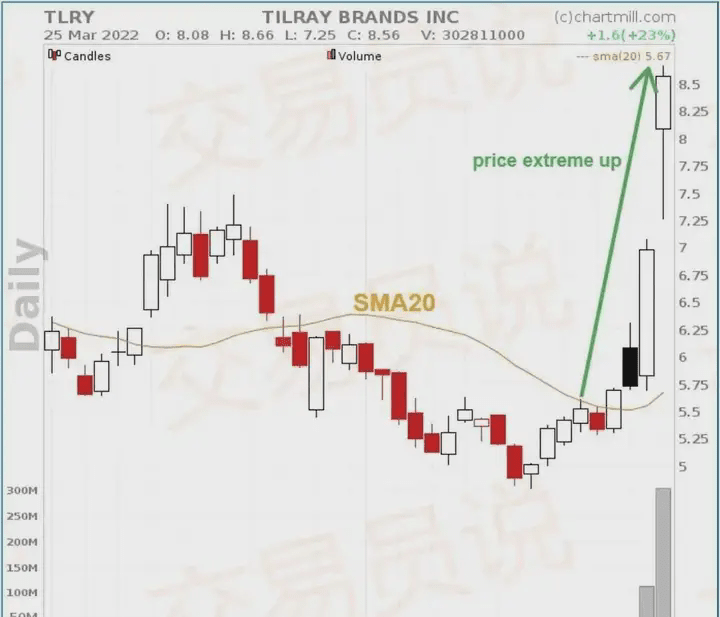
Starting from March 23, the price suddenly skyrocketed, peaking on March 27, indicating an extreme upward price movement (green arrow), at which point the price was far above the 20-day moving average.
Similar extreme prices but in bearish conditions can be seen in Biontech (BNTX) stock. The price sharply dropped, leading to an extreme downward price movement, significantly below SMA20 at that point.
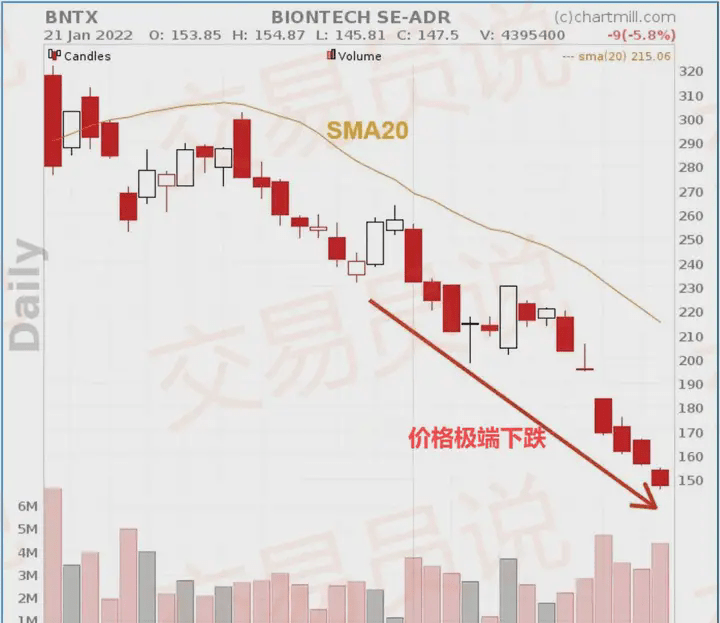
2. 2-period RSI below 10 or above 90.
Using RSI(2), we try to identify possible rebound moments (mean reversion). We do this by looking for moments on the chart when RSI(2) is below 10 (bullish) or above 90 (bearish).
In the TLRY chart, we added the RSI(2) indicator. You can see that from February 24, 2022, its value exceeded 90, indicating a state of extreme overbought.
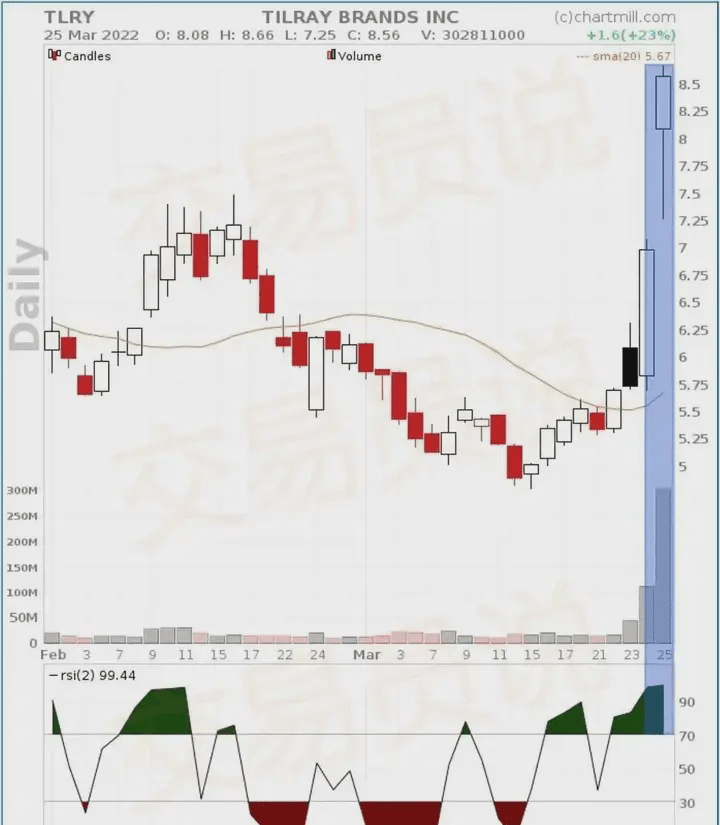
Additionally, on February 25, 2022, the RSI was still above 90.
Regarding BNTX, we observed that from January 18 to January 21, 2022, the RSI(2) was below 10.
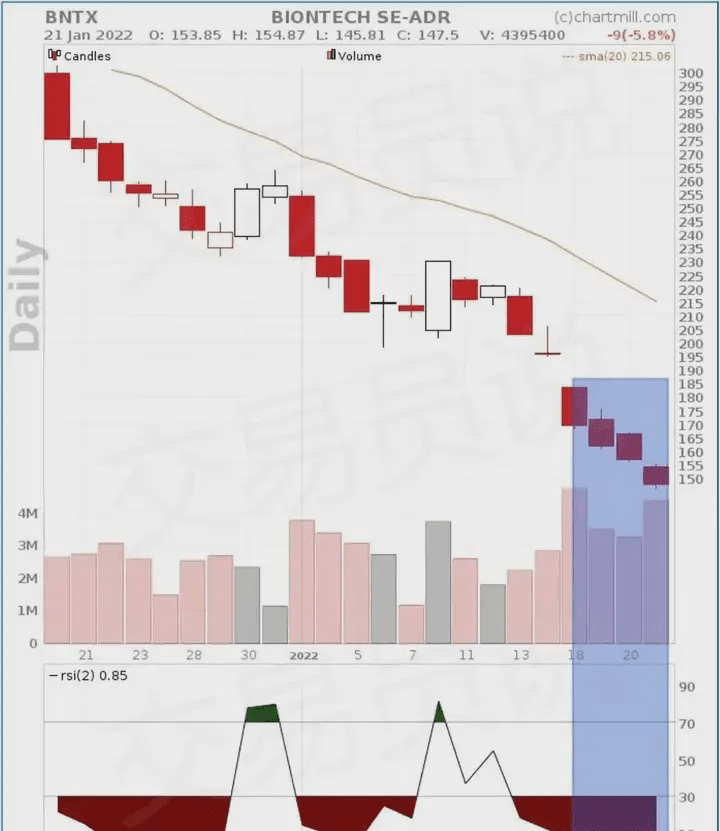
Price extreme upwards or downwards, while the RSI(2) value is above 90 or below 10, are two necessary conditions for applying this strategy.
3. RSI(2) rises back above 10 (bullish setup) or falls back below 90 (bearish setup).
This is the last step before we determine the actual entry settings. An RSI(2) value dropping from +90 to below 70 is a signal to short.
In the TLRY chart, the RSI(2) was slightly below 70 after the trading day on March 28, 2022.
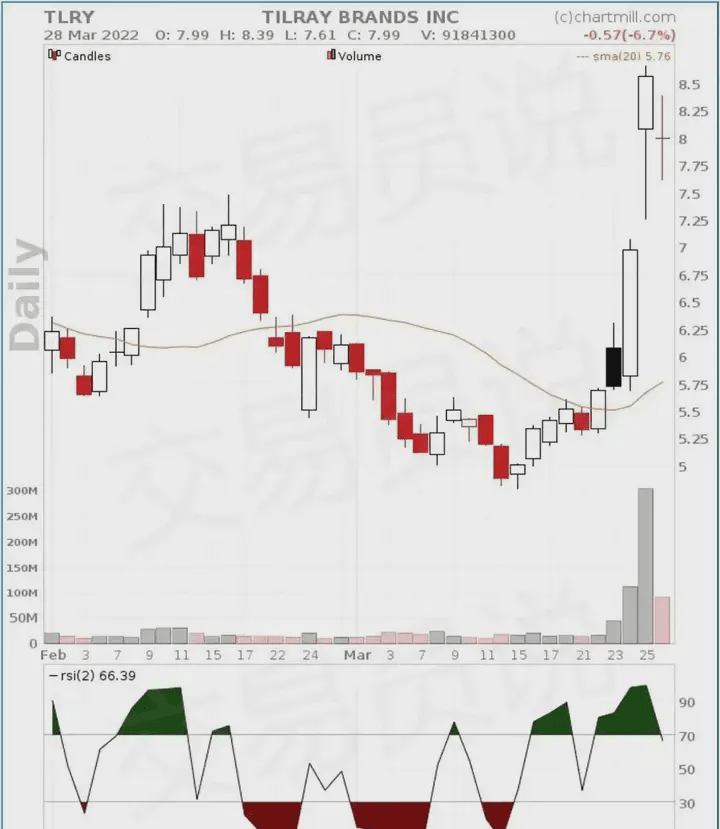
An RSI(2) value rising from below 10 to above 30 is a signal to go long.
This can be observed in the BNTX chart, dated January 25, 2022.
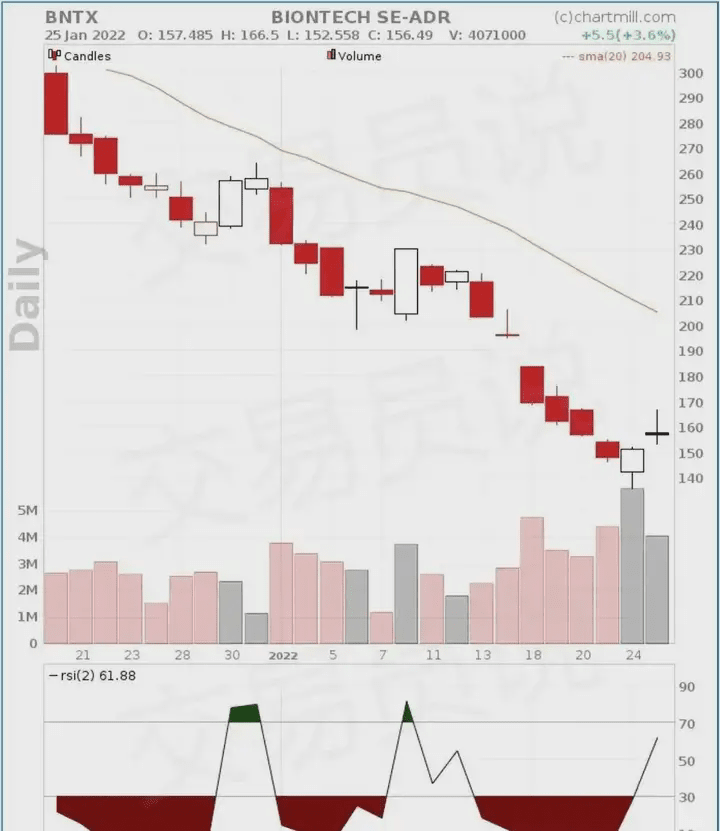
Only after completing the first three steps can you set up to buy or sell.
4. Opening positions.
Only after completing the first three steps can you open a position.
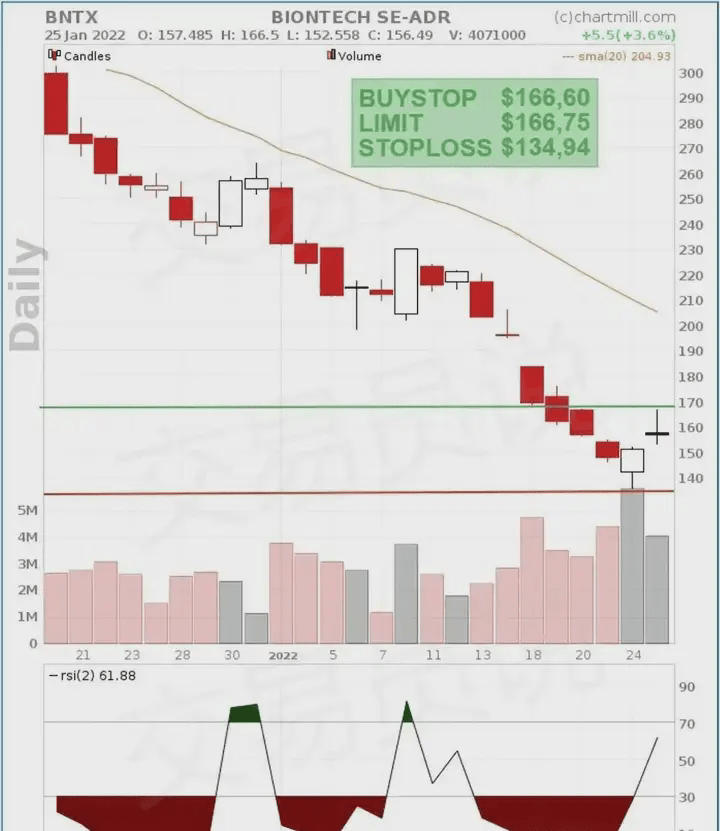
Using buy/sell stop-limit orders can very precisely determine entry points. By using a 'sell stop-limit order', we define that the stock price must first continue to drop below the signal candlestick low for the short position to take effect (taking TLRY as an example).
For BNTX, use a 'buy stop-limit order'. The price must first rise above the last candlestick high for the order to be effective and executed.
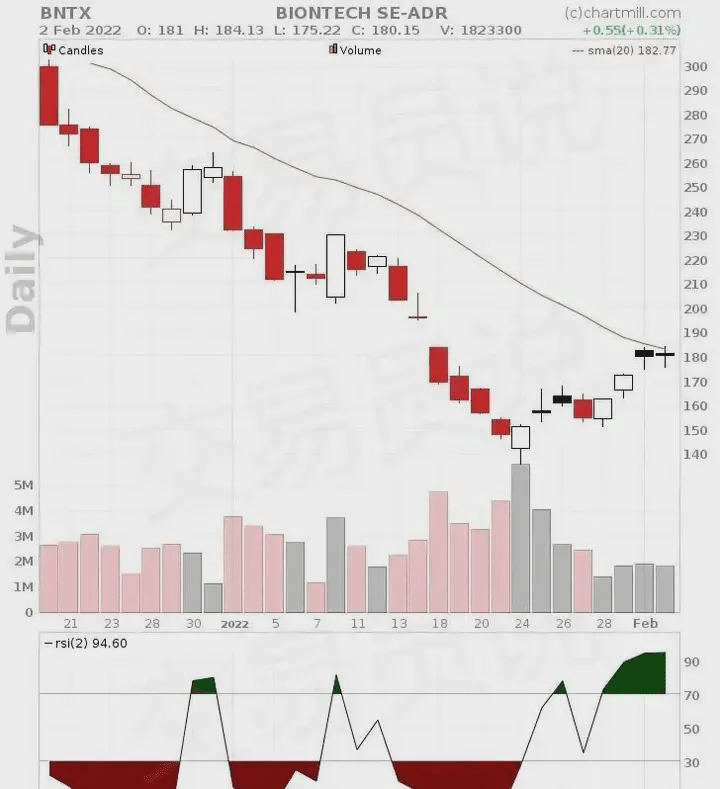
For BNTX, the order was triggered on the next trading day, and only 6 days later, the price reached SMA20, which is the first target.
Depending on how you further manage your position, you can partially or fully take profits at this level. For the remaining portion, stop loss can be adjusted upwards.
As for TLRY, the price initially rose slightly, and the sell order was not triggered immediately. Therefore, the RSI(2) indicator re-entered the oversold zone on March 29, 2022.
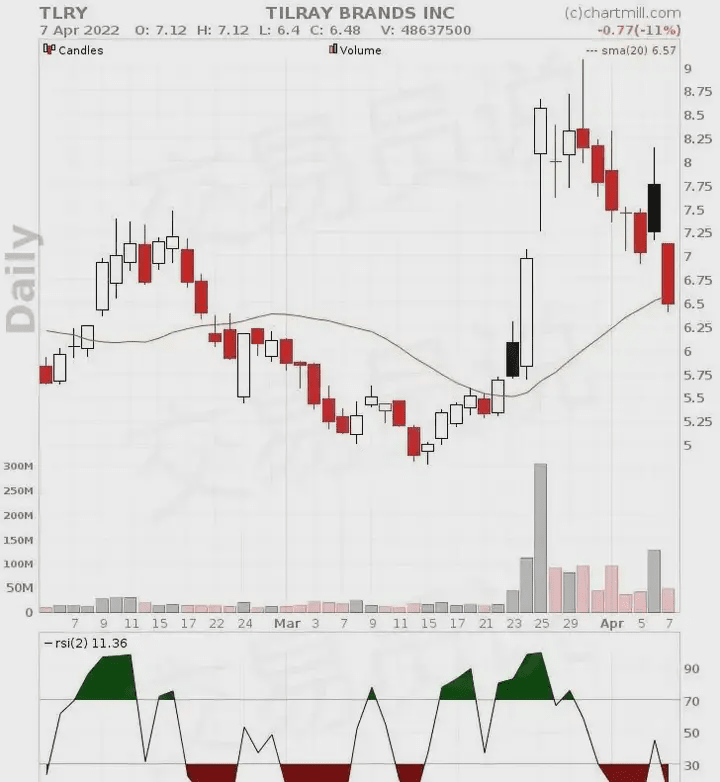
The next day, a bearish doji candlestick formed, and RSI(2) fell below 70 for the second time.
Set a modified short entry point below this doji candlestick low and set a stop loss above the high point. This is definitely a setup worth considering in this mean reversion strategy.
During this process, the position was never threatened, and SMA20 was touched on April 7, 2022.
Other similar 2-period RSI trading strategy examples.
Going long on WB.
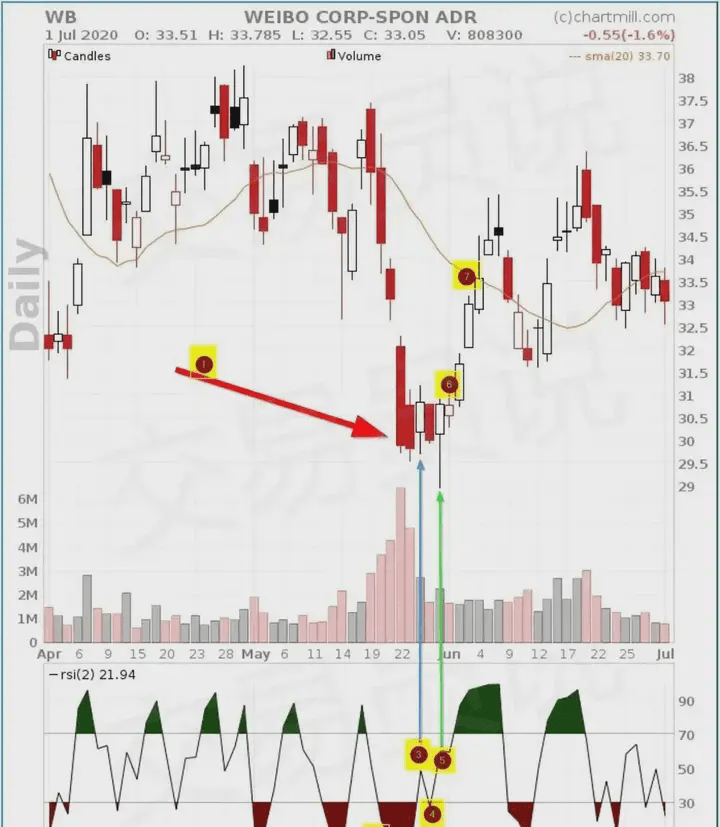
1. Price extreme downwards, significantly deviating from SMA20.
2. RSI(2) indicator < 10
3. RSI(2) indicator > 30 (however, due to the candlestick high indicated by the blue vertical arrow not being broken, no entry occurred the next day).
4. RSI(2) falls back below 30 again.
5. RSI(2) > 30.
6. This time, the candlestick high indicated by the green arrow was broken on the next trading day (entry long, stop loss set below the low price range).
7. The first target achieved (SMA20).
Going long on IAS.
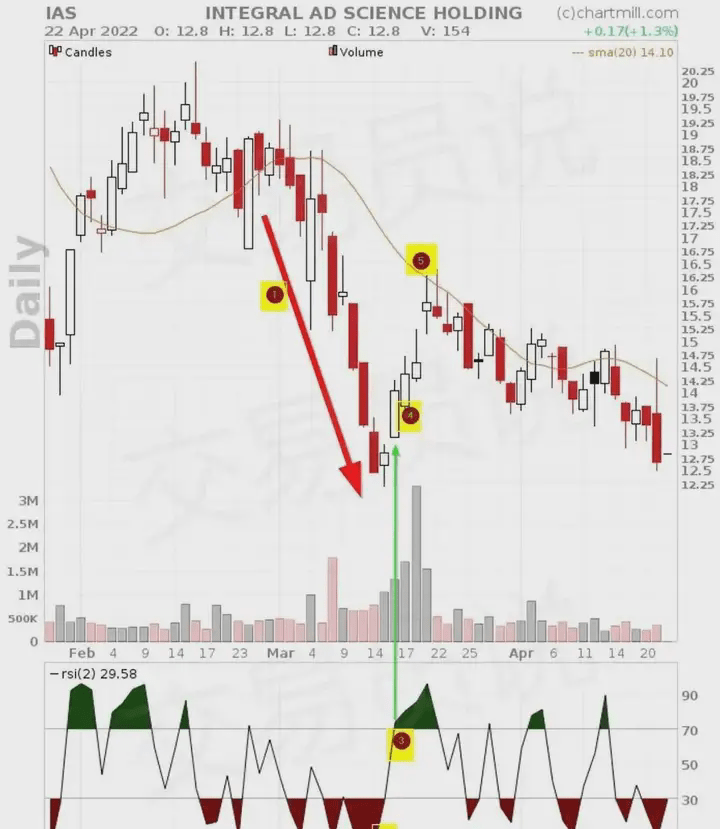
1. Price extreme downwards, significantly deviating from SMA20.
2. RSI(2) indicator < 10.
3. RSI(2) indicator > 30
4. The candlestick high indicated by the green arrow has been broken (entry long, stop loss set below the low price range).
5. The first target achieved (SMA20).
Going short on EIGR.
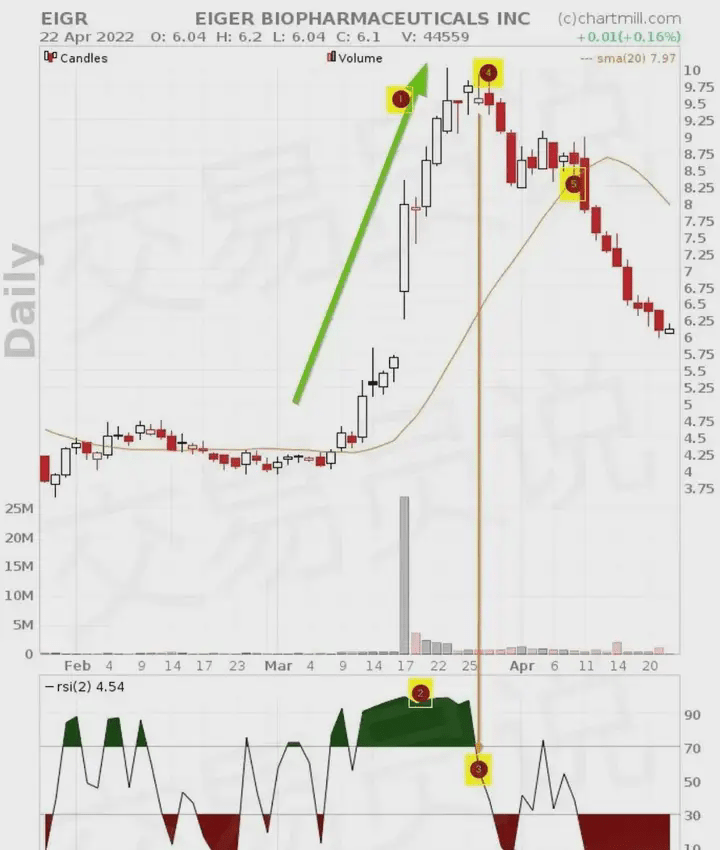
1. Price extreme upwards, significantly deviating from SMA20.
2. RSI(2) indicator > 90.
3. RSI(2) indicator < 70.
4. The candlestick low indicated by the orange arrow has been broken (entry short, stop loss set above the high price range).
5. The first target achieved (SMA20).
Important considerations when using the 2-period RSI strategy.
● Ensure extreme prices are clearly visible; the greater the strength and speed of the price deviation from the moving average, the greater the likelihood of a subsequent pullback movement that drives the price back towards the moving average.
● Always stick to your stop loss! Strong trends may sometimes last longer than expected, especially for trends driven by fundamental reasons, such as company performance far exceeding expectations; events can develop rapidly in a very short time.
● Do not attempt to predict reversals in advance; patiently wait for RSI(2) to recover from overbought or oversold conditions, and always use stop-limit orders slightly above or below the trigger candlestick high or low. By doing so, you can avoid many false signals.
● Do not rely solely on one indicator to formulate a strategy, but try to find other elements that support your viewpoint and settings. For example, a rebound from an important support level on a higher time frame or the shape of the candlestick itself (such as bullish hammer or bullish engulfing patterns, etc.). The more converging elements, the stronger the setup!
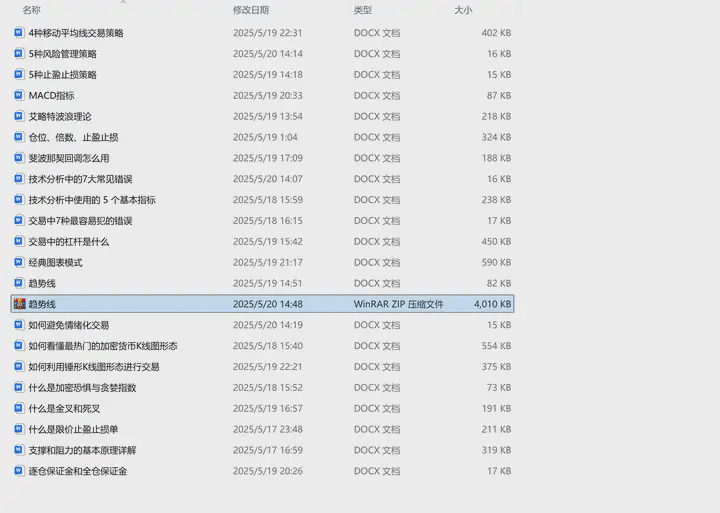
Creation is not easy; thank you for reading. If you want to discuss techniques and layout to quality cryptocurrencies together, feel free to give a thumbs up + follow.
Playing in the crypto market is essentially a contest between retail investors and institutional players. If you don't have cutting-edge news or firsthand information, you can only be cut! If you want to layout together and reap the rewards from the institutions, feel free to reach out! Like-minded people in the crypto space are welcome to discuss~#加密立法新纪元 #特朗普施压鲍威尔 $BTC
